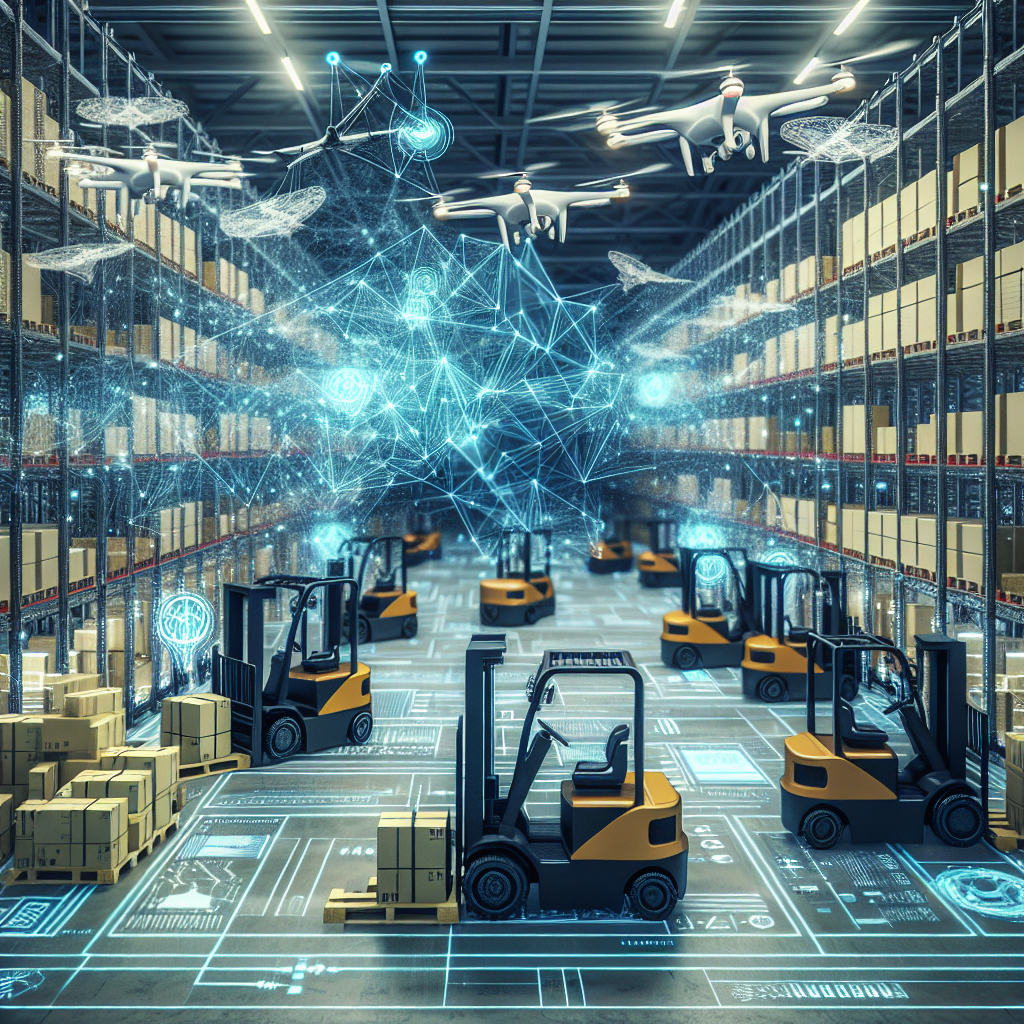In the world of logistics, efficiency is key. Businesses are constantly looking for ways to streamline their operations and reduce costs. One area where this is particularly crucial is in the management of cross-docking and transshipment processes. These processes involve the transfer of goods from one mode of transportation to another, typically without the need for storage.
Traditionally, cross-docking and transshipment have been manual processes that require a great deal of coordination and planning. However, thanks to advancements in artificial intelligence (AI) technology, companies are now able to enhance these processes in ways that were previously unimaginable.
AI in Logistics
AI is revolutionizing the logistics industry in a number of ways. From predictive analytics to autonomous vehicles, AI technologies are being used to optimize supply chain operations and improve efficiency. One area where AI is particularly useful is in the management of cross-docking and transshipment processes.
By leveraging AI algorithms, companies are able to improve the speed and accuracy of these processes, leading to cost savings and improved customer satisfaction. AI can help companies better plan and coordinate the movement of goods, optimize routes, and even predict potential issues before they arise.
Benefits of AI in Cross-Docking and Transshipment
There are a number of benefits to using AI in cross-docking and transshipment processes. Some of the key advantages include:
1. Improved Efficiency: AI algorithms are able to analyze vast amounts of data and make decisions in real-time, leading to more efficient operations.
2. Cost Savings: By optimizing routes and reducing idle time, companies can save on fuel costs and other expenses.
3. Enhanced Visibility: AI technologies can provide real-time tracking and monitoring of goods, giving companies greater visibility into their supply chain.
4. Better Planning: AI can help companies better plan and coordinate the movement of goods, reducing the risk of delays and disruptions.
5. Increased Customer Satisfaction: By improving the speed and accuracy of cross-docking and transshipment processes, companies can deliver goods to customers faster and more reliably.
Case Study: Amazon
One of the most well-known examples of AI in logistics is Amazon. The e-commerce giant has invested heavily in AI technologies to optimize its supply chain operations, including cross-docking and transshipment processes.
Amazon uses AI algorithms to optimize delivery routes, predict demand, and even automate fulfillment processes. By leveraging AI, Amazon is able to deliver goods to customers faster and more efficiently than ever before.
FAQs
Q: How does AI improve cross-docking and transshipment processes?
A: AI algorithms are able to analyze vast amounts of data and make decisions in real-time, leading to more efficient operations. By optimizing routes, reducing idle time, and providing real-time tracking and monitoring of goods, companies can improve the speed and accuracy of cross-docking and transshipment processes.
Q: What are some examples of AI technologies used in logistics?
A: Some examples of AI technologies used in logistics include predictive analytics, autonomous vehicles, and robotic process automation. These technologies are being used to optimize supply chain operations, improve efficiency, and reduce costs.
Q: How can companies implement AI in their cross-docking and transshipment processes?
A: Companies can implement AI in their cross-docking and transshipment processes by investing in AI software and tools, training staff on how to use these technologies, and integrating AI into existing systems and processes. By leveraging AI, companies can improve the efficiency and accuracy of their operations, leading to cost savings and improved customer satisfaction.
In conclusion, AI technology is revolutionizing the logistics industry, particularly in the area of cross-docking and transshipment processes. By leveraging AI algorithms, companies are able to improve the speed, efficiency, and accuracy of these processes, leading to cost savings and improved customer satisfaction. As AI continues to advance, we can expect to see even greater innovations in the field of logistics, further optimizing supply chain operations and driving business success.

